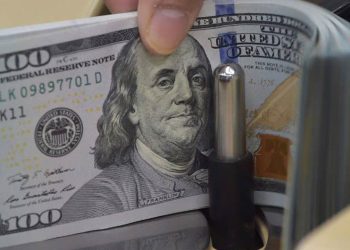In a turn of events, the Nigerian naira faced a significant decline in the official market, reaching its lowest level, even as the U.S. dollar index plummeted to a three-week low amidst anticipation of U.S. jobs data.
Data from the FMDQ exchange securities revealed that the naira experienced a 1% drop on Thursday, surpassing N1,400 against the U.S. dollar. This decline marked a notable shift from the N1,390 reported during the previous trading session, with Wednesday observed as a public holiday.
At the Nigerian Autonomous Foreign Exchange Market, the intraday high closed at N1,445, a slight decrease from the N1,450 recorded on Tuesday. Conversely, the intraday low decreased from N1,200 to N1,299 during the same period.
Despite the falling U.S. dollar index, which measures the greenback’s strength against major currencies, reaching its lowest point since April 11, hovering around 105.2 index points, the Nigerian naira failed to capitalize on the situation. This lack of response can be attributed to the Fed Chair Jerome Powell’s dismissal of potential interest rate hikes during the FOMC meeting.
As expected, the Federal Reserve opted to maintain interest rates unchanged at the conclusion of its recent monetary policy meeting, underscoring concerns about persistent inflation levels. With the April non-farm payrolls report looming, investors eagerly await clues on the Federal Reserve’s stance regarding interest rates.
Market analysts anticipate a decline in demand for the U.S. dollar as geopolitical tensions in the Middle East ease, potentially pushing the currency below the 105 level. Following Powell’s remarks indicating the possibility of prolonged high-interest rates, attention has shifted to the forthcoming U.S. nonfarm payrolls data.
Looking ahead, currency traders are closely monitoring the U.S. dollar index’s trajectory, especially in light of expectations for healthy job market growth and inflation data. JP Morgan forecasts suggest that the robust U.S. economic performance and reduced expectations of easing by the Federal Reserve will likely bolster the dollar’s strength throughout the year.
However, cautious optimism prevails as currency stability remains vulnerable to inflationary pressures and policy responses. The evolving economic landscape underscores the importance of closely monitoring key indicators to navigate the complexities of the global currency market.










